The Future of AI: Key Advancements Driving Change
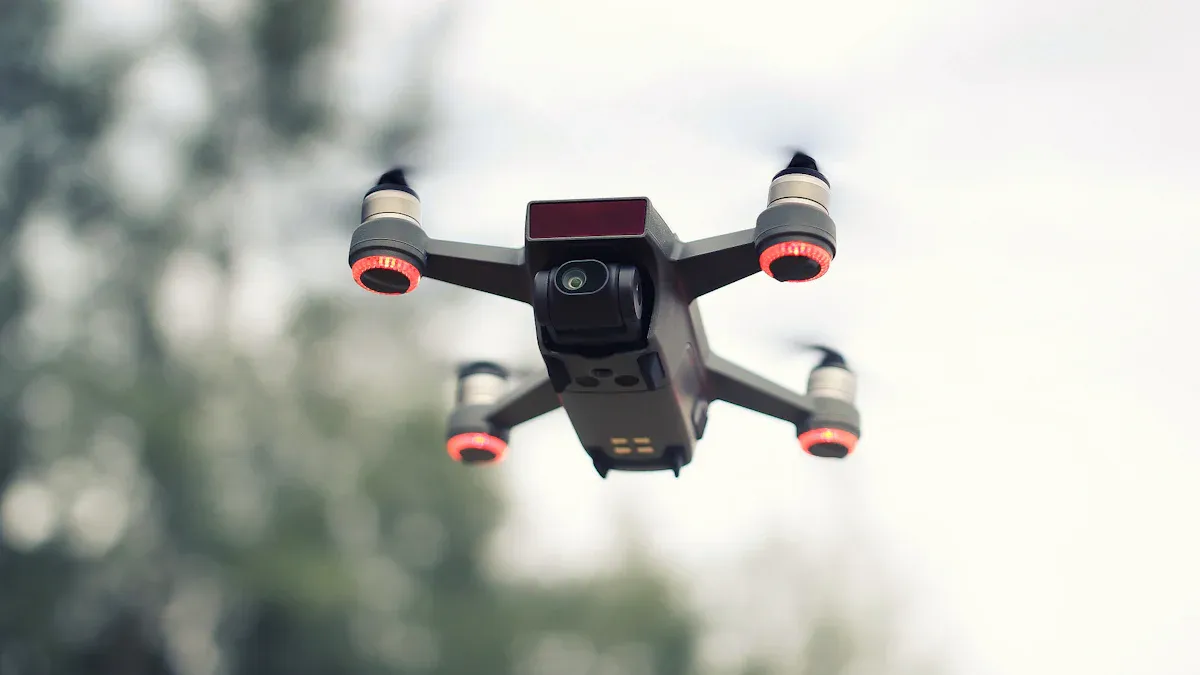
Artificial intelligence is changing industries with new ideas and speed. By 2025, AI will improve areas like healthcare, education, and telecom. Over 90% of these sectors will use AI tools. AI helps create smart solutions, making work faster by 35%. It also cuts mistakes in predictions by 38%. AI tests keep finding new ways to improve life and work.
Key Takeaways
AI will change industries by 2025, making work faster and creating new jobs.
AI automation helps workers do creative tasks, boosting work output and happiness.
Generative AI and multimodal AI will change how we make content and choices, bringing better ideas.
AI's Role in Changing Work
Automation and Job Changes
Automation is changing work by handling boring, repeated tasks. This lets people focus on creative ideas and solving problems. AI is a big part of this change. It shows that new jobs often replace lost ones. For example, AI creates new roles while improving current ones.
Still, some jobs are at risk. For instance:
Job | Jobs Lost | Impact Percent |
|---|---|---|
Office secretaries | 6 million | 26% |
Accountants and payroll clerks | 4.75 million | N/A |
Bank tellers | 1.5 million | N/A |
Even with these changes, 73.2% of companies now value creative thinking more. History shows that when workers learn new skills, technology creates more jobs than it removes.
AI Helpers and Virtual Assistants
AI helpers and virtual assistants are changing how tasks get done. They answer simple questions and handle repeated work. This saves time for harder tasks. They also help many customers at once, cutting wait times and making people happier.
These tools boost productivity by managing emails, schedules, and other tasks. They learn from data to give quick and correct answers. For example:
Benefit | What It Does |
|---|---|
Better workflows | |
Higher productivity | AI helps people solve problems and focus on harder work. |
Smarter task management | AI understands needs and assigns tasks to the right helper. |
AI helpers also reduce mistakes and get better with use. Companies can help more customers without hiring extra staff. This keeps service good, even when busy.
Tools for Work and Teamwork
AI in work tools has changed how teams share ideas and decide things. AI-made summaries help teams quickly review talks and stay updated. Teams can find details fast, saving hours of searching.
Benefit | What It Does |
|---|---|
Saves time | Teams find info in seconds, not hours. |
Finds hidden insights | AI spots patterns people might miss. |
Better decisions | Quick access to facts helps teams decide faster. |
Easier teamwork | AI summaries keep everyone on the same page. |
AI tracks tasks, assigns follow-ups, and cuts down on extra meetings. These tools make teamwork better and help people get more done in less time.
Smarter and More Capable AI in 2025
Improvements in Generative AI Models
By 2025, generative AI has become much smarter. It can now make realistic pictures, videos, and even virtual worlds. These tools are not just for fun but also solve problems. For example, businesses use generative AI to design and test products faster. This saves money and speeds up new ideas.
One exciting feature is generative video. You can type a scene description, and the AI creates a matching video. This is changing industries like entertainment, marketing, and education. Now, you can make cool videos without expensive tools or big teams.
Generative AI is growing because more businesses are using it. Companies worldwide depend on these models to improve their work.
Evidence Type | Statistic/Trend |
|---|---|
More AI/ML Usage | |
AI Tools Adoption | 73% of people used AI/ML tools in 2023. |
Current AI Use | 35% of global companies use AI as of 2024. |
AI Market Growth | Expected growth rate of 36.6% from 2024 to 2030. |
AI Growth in 2025 | AI market to grow by 26% in 2025. |
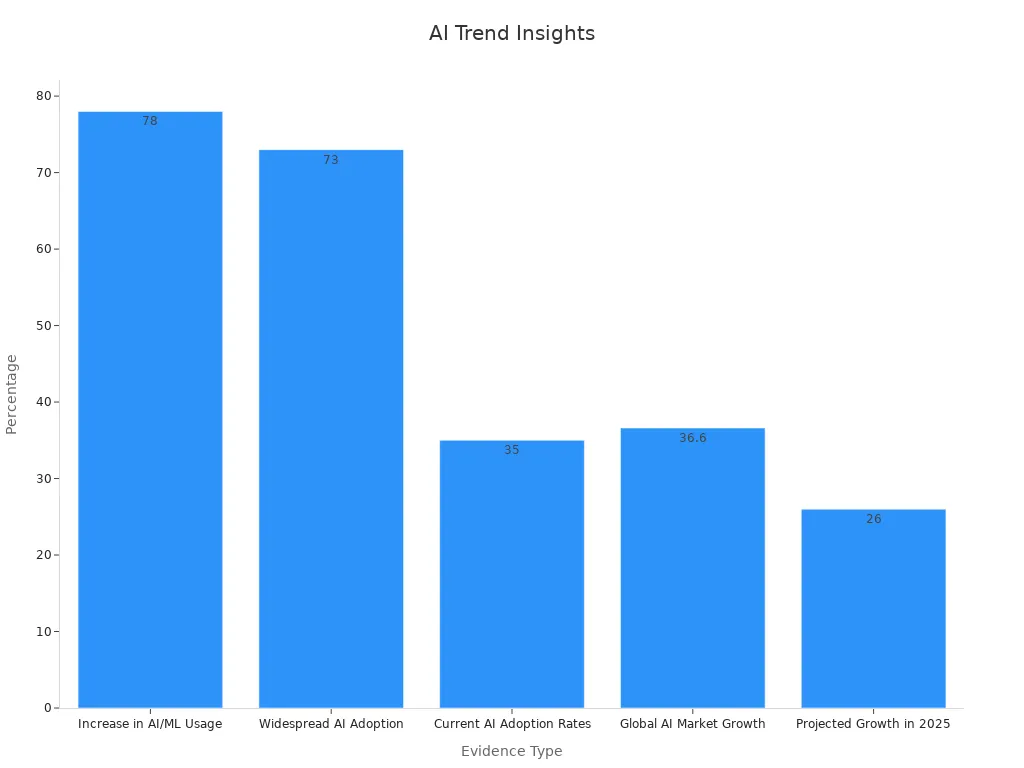
Generative AI is also easier to use now. Big language models are made to work better on small devices. This means you can use them without losing quality. These changes make generative AI a key part of 2025's technology.
Multimodal AI and Its Versatility
Multimodal AI is changing how we use technology. Unlike older AI, it works with many types of data at once. It can mix text, pictures, and sounds to give better answers. This makes it useful in many areas.
In healthcare, multimodal AI has made big improvements. It predicts chest x-ray problems 22% better. It also improves hospital stay predictions by 20% and death risks by 33%. For diseases like pneumonia, accuracy has gone up by 8% to 10%. These tools help doctors make faster and better decisions, saving lives.
Multimodal AI is also great at speech tasks. It matches audio with text, pictures, and videos for better understanding. For example, it can add subtitles to videos instantly or translate spoken words into other formats. This makes it helpful in schools, customer service, and creating content.
Big language models make multimodal AI even smarter. They help it understand and follow complex instructions. This makes multimodal AI perfect for tasks needing deep understanding.
Better Thinking and Decision-Making
AI in 2025 is about more than just doing tasks. It’s about making smarter choices. New AI systems can remember past talks and use them to give better answers. For example, an AI assistant can recall your likes and suggest helpful ideas.
Another improvement is tool-augmented reasoning. AI now knows when to use extra tools for better results. In healthcare, it studies patient data to suggest treatments. In finance, it checks markets and spots fraud. In law, it reviews contracts and finds risks.
These smarter decisions help in all fields. AI can study big data to find patterns and trends. This helps you make better plans, whether for work or personal projects. With these skills, AI becomes a must-have tool in 2025.
AI in Science and Healthcare
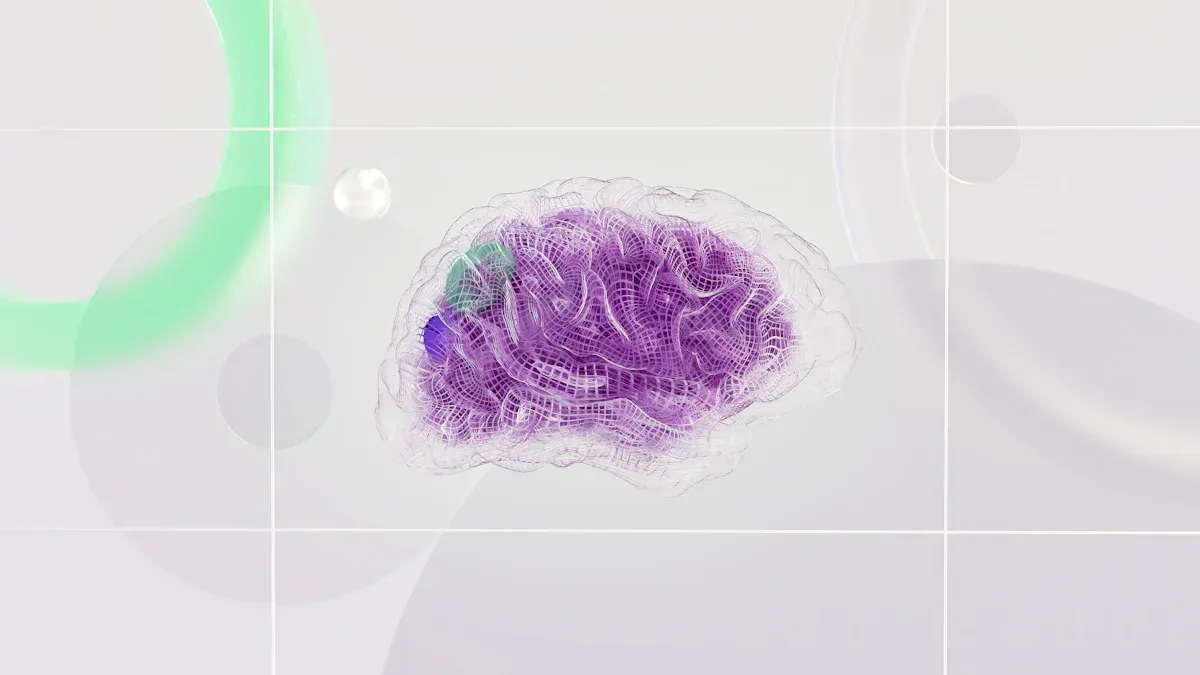
New Discoveries in Science
AI is changing how scientists make discoveries. It works like a smart partner, helping researchers find new ideas and explore unknown areas. For example, AI can guess human decisions and spot gaps in research. This helps uncover ideas that might be missed.
"By understanding what people do, AI improves predictions and speeds up science. It adds smart help to make discoveries faster."
AI tools like Gemini 2.0 make research quicker by testing scientific systems and creating ideas to study. These tools show why schools need new ways to teach for better discoveries.
Evidence Description | Key Findings |
|---|---|
AI guesses human decisions and finds research gaps. | AI creates new ideas, opening unexplored areas in science. |
Virtual helpers make research faster and more effective. |
Faster Drug Discovery with AI
AI is making drug discovery quicker and more accurate. It shortens the time to find participants by 30% and doubles the efficiency of research. AI improves drug prediction accuracy by 75% and reduces trial participants by 30-40%.
Outcome Description | Measurable Impact |
|---|---|
Shorter participant recruitment time | 30% faster |
Better research efficiency | 2x improvement |
Fewer clinical trial participants needed | 30-40% fewer |
More accurate drug predictions | 75% improvement |
These changes mean faster access to life-saving medicines and better treatments.
Personalized Healthcare with AI
AI helps create personalized healthcare by studying health records, genes, and immune data. It finds high-risk patients and predicts diseases based on their health profiles. Tools like REVAMP match patients with the best treatments, improving results.
AI also finds genetic changes, helping doctors choose the right treatments. This ensures care is accurate and tailored to each person, leading to healthier lives.
Data and AI in Supply Chain Management
JUSDA's AI-Powered Supply Chain Collaboration Platform
AI is changing how supply chains work. JUSDA's AI-powered platform is a great example. It uses smart tools like AI and data to make global supply chains easier. It connects suppliers, customers, and managers instantly for smooth teamwork.
The platform helps with planning, deliveries, and managing stock. For example, it studies big data to guess future needs. This stops you from having too much or too little stock. It also handles shipping and customs, cutting delays and saving time.
One cool feature is real-time tracking. You can see where shipments are, check stock, and spot risks early. This helps you make quick and smart choices. By using AI and data, JUSDA keeps your supply chain running smoothly.
Boosting Efficiency with AI Demand Forecasting
AI demand forecasting makes supply chains better. It studies lots of data to predict what people will need. By looking at many data sources, AI shows market trends clearly. This helps you plan well and waste less.
If the market changes suddenly, AI updates its guesses fast. It also spots customer habits, so you can adjust production early. This means fewer leftover products and happier buyers.
Here’s how AI helps supply chains:
It adjusts to surprises, keeping things running smoothly.
It finds patterns to help you decide smarter.
It cuts mistakes in planning, saving time and money.
AI builds a smart system that keeps your supply chain ready for anything.
Real-Time Transparency and Smarter Choices with AI
Seeing things in real time is key today. AI tools give instant updates on supply chain data. For example, telematics tracks trucks live, showing location, speed, and fuel use. This helps you plan better routes and deliver faster.
AI also checks traffic using GPS and cameras to find the best paths. This avoids delays and keeps deliveries on time. Plus, AI watches stock levels live. It predicts what you’ll need next, so you don’t run out or overstock.
Here’s how AI improves transparency and decisions:
Live truck tracking makes deliveries smoother.
Traffic checks find faster delivery routes.
Stock tracking stops shortages and extra stock.
These tools make AI a must-have for supply chains. With data insights, you can make choices that save time and keep customers happy.
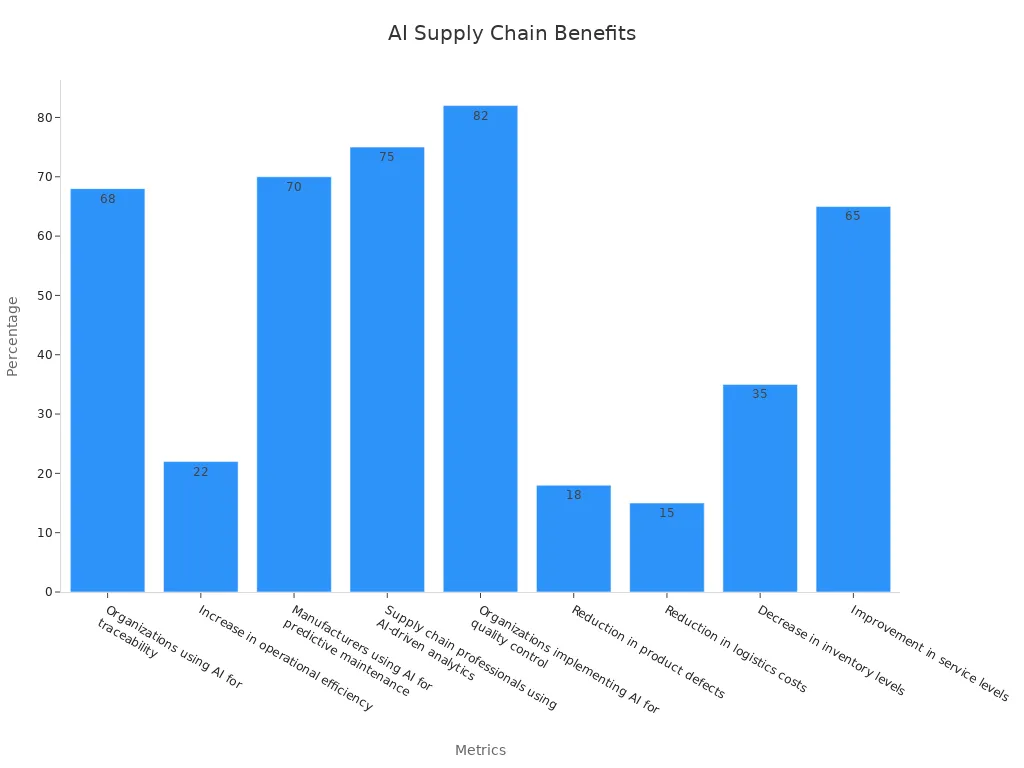
Sustainability and Ethical AI

Smarter and Energy-Saving AI Models
AI models are now smarter and use less energy. They can work well while saving power. Methods like power capping and early stopping help cut energy use. Power capping saves 12% to 15% energy but takes a bit more time. Early stopping saves up to 80% energy by stopping weak models early.
Technique | Energy Savings (%) | Performance Impact | Notes |
|---|---|---|---|
Power Capping | 12% to 15% | Small delay | Uses less energy with a slight increase in task time. |
Early Stopping | 80% | N/A | Stops weak models early, saving lots of energy. |
Better Hardware Use | 10% to 20% | N/A | Matches models with hardware that uses less carbon. |
These changes show AI can grow while staying eco-friendly. It’s a smart way to balance progress and care for the planet.
Cutting AI’s Environmental Harm
AI is helping lower its own environmental damage. New methods make large AI models use less energy and create fewer emissions. For example, quantization cuts energy use and carbon output by up to 45%. This means AI can stay strong while being greener.
Energy-saving AI lowers carbon emissions and power use.
Quantization reduces energy needs by up to 45%.
These methods prove AI can be both useful and eco-friendly.
Using these ideas helps the planet while keeping AI powerful and helpful.
Fair and Trustworthy AI Systems
To trust AI, it must be fair and clear. Developers should build systems that are easy to understand and follow rules. Companies now use proven ways to check risks and ensure AI is ethical.
Make AI systems fair and easy to explain.
Use tools to find and fix risks.
Work with others to solve problems together.
These steps make sure AI helps people responsibly. It creates a future where technology and ethics work side by side.
AI in Governance and Security
AI in Public Sector Applications
AI is changing how the public sector works. It makes decisions faster and improves efficiency. Agencies use AI to manage resources, shape policies, and deliver services better. Modern governments collect a lot of data, and AI helps turn this into useful information. This switch from old methods to AI tools is important to meet citizens' needs today.
For example, half of federal agencies now use advanced AI systems. In 2023, there were 710 AI projects in agencies. By 2024, this number will grow to 1,757.
Statistic/Fact | What It Means |
|---|---|
50% of agencies use advanced AI | Shows strong AI adoption for better governance. |
710 AI projects in 2023 | Marks the start of AI use in agencies. |
1,757 AI projects by 2024 | Shows fast growth of AI in public services. |
AI tools also improve how governments talk to citizens. They make communication faster and reduce waiting times. These tools help agencies serve people better while working more efficiently.
Enhancing National Security with AI
AI is very important for keeping countries safe. It tracks risks, checks safety, and keeps systems strong. AI can watch for threats and respond quickly to problems. For example, it uses reliable data to find errors and avoid bias.
Indicator | What It Does |
|---|---|
Tracks Progress | Measures goals and ensures accuracy. |
Monitors Risks | Finds and watches for possible dangers. |
Keeps Systems Strong | Works well even during tough times. |
Uses Reliable Data | Checks data quality and fairness. |
Evaluates Safety | Reviews risks to keep things safe. |
AI studies large amounts of data to stop threats before they happen. It also keeps systems working during emergencies, making it a key tool for national defense.
Regulatory Frameworks for AI Development
Governments know AI needs fair rules. By 2026, half of all governments will have policies for ethics, transparency, and privacy. These rules make sure AI is used responsibly.
AI rules should be clear and fair. They must allow checks to avoid unfair decisions and build trust.
Breaking these rules can lead to fines, bad reputations, or legal trouble. As AI grows, strong rules will help ensure it is used ethically and responsibly.
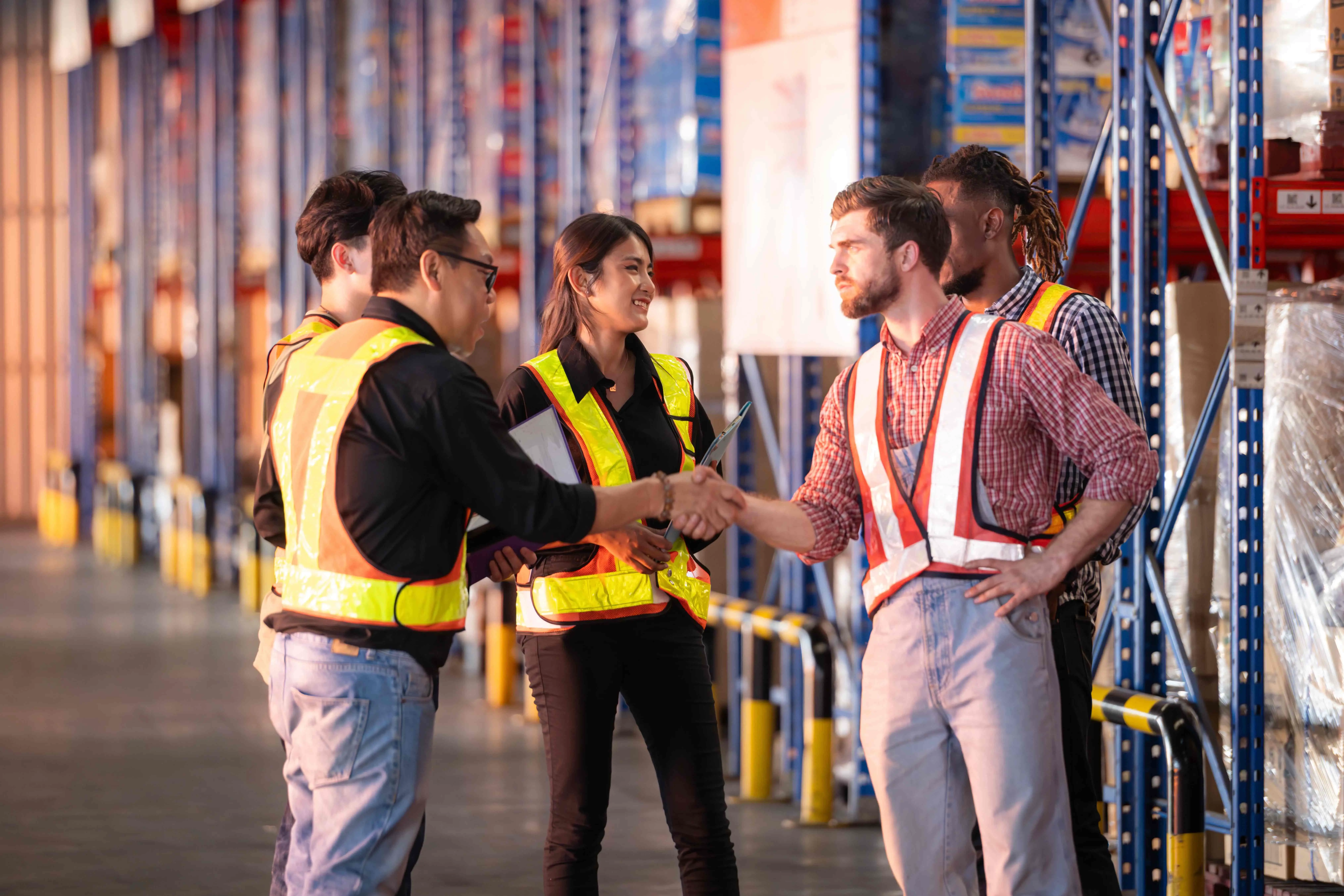
JUSDA Solutions
To provide you with professional solutions and quotations.
The future of AI is changing jobs and industries. By 2025, AI will remove 85 million jobs but create 97 million new ones. This means 12 million more jobs overall. Around 72% of companies will use AI, and half will apply it in many areas. These changes could raise productivity by 80% and add $15.7 trillion to the world economy by 2030.
Metric | Value |
|---|---|
Jobs lost due to AI by 2025 | 85 million |
Jobs added by AI by 2025 | 97 million |
Total job increase from AI | 12 million |
Companies using AI | 72% |
Companies applying AI in multiple areas | 50% |
Worker productivity improvement | Up to 80% |
AI’s global economic impact by 2030 | $15.7 trillion |
U.S. GDP growth from AI | 21% |
Corporate value rise for AI users | 9% |
Growth in knowledge-based industries | 5% |
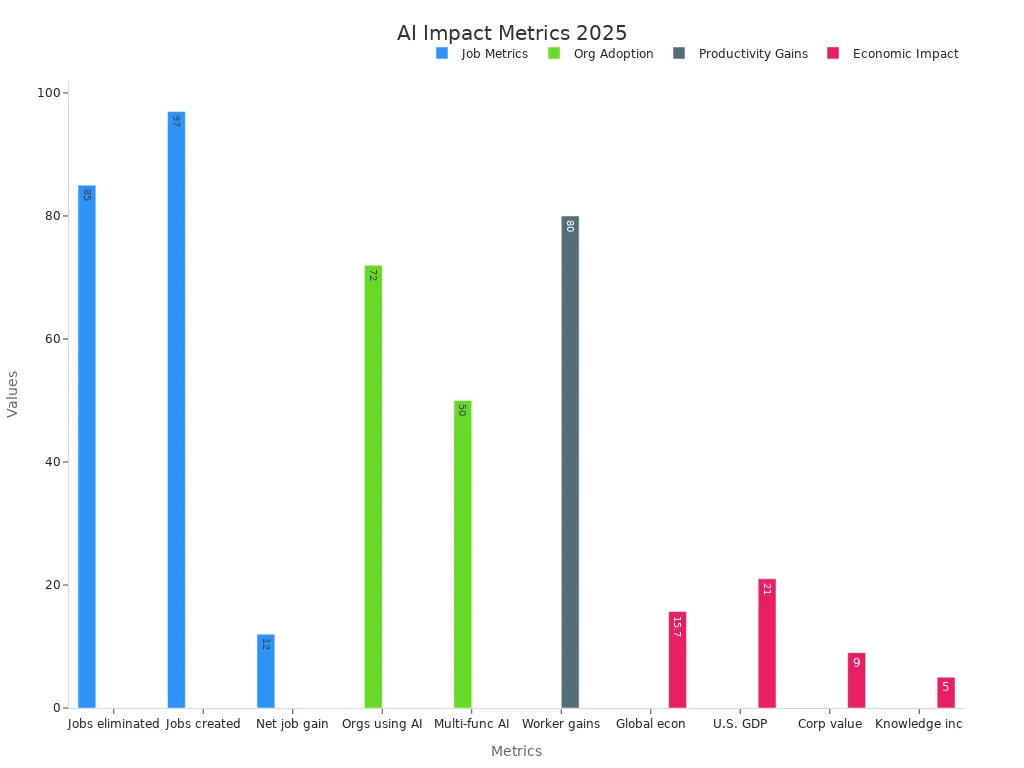
These advancements will solve tough problems and open new doors. But the future of AI must focus on fairness and sustainability. Responsible actions are key to making AI helpful for everyone.
See Also
Transforming Our World: The Impact of AI Technology
Discovering Tomorrow's Supply Chain Through AI Integration
Automation in Manufacturing: Advantages of High-Tech Warehousing
Innovations in Logistics Technology: Exploring Future Possibilities
Sustainable Practices: Robotics Trends in Supply Chain Management
